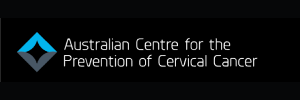Number of Persons Having a Bowel Cancer Screening Test in Victoria (Jan 2018 - Dec 2022)
1. Definition
- Number of persons aged 50-74 who had a bowel cancer screening test in Victoria from Jan 2018 to Dec 2022.
2.Data sources:
- NCSR Raw Data Extract - released Jan 2024 - for period Jan-Dec 2022
- NCSR Raw Data Extract - released Jan 2022 - for period Jan-Dec 2021
- NCSR Ad Hoc reporting service Request AHR-1480 (screens by round) for period Jan19 - Jan 21 - data received 17/6/2021.
- NCSR Ad Hoc reporting service Request AH_1489 for period Nov 20 - Dec 20 and REVISED data (indigenous and language spoken) for period Nov 19 - Oct 20 - received 15/02/2021.
- NCSR Ad Hoc reporting service Request AH_1489 for period Nov 20 - Dec 20 and REVISED data (by postcode and country of birth) for period Nov 19 - Oct 20 - received 29/01/2021.
- NCSR Ad Hoc reporting service Request AH_1413 for period Aug 20 - Oct 20 - data received 14/12/2020.
- NCSR Ad Hoc reporting service Request AH_1224 for period Apr 20 - Jul 20 - data received 01/09/2020.
- NCSR Ad Hoc reporting service Request AH_1090 for period Jan 19 - Mar 20 - data received 25/06/2020.
3. Data for 2021 and 2022 were calculated differently from data for the previous periods.
- Due to the delayed release of the Raw Data Extract (RDE) by the National Cancer Screening Register (NCSR), we relied on ad-hoc data requests from the NCSR as an interim measure. These were used for the 2018, 2019 and 2020 data.
- 2021 and 2022 uses the NCSR RDE. Once the methodology using the RDE has been finalised, data for the previous timeframes will be updated.
4. Data items or Methodology
- Tables provide monthly count of persons returning a Bowel Screening Test within the timeframe (01/01/2018 - 31/12/2022). This is not a count of tests.
- Tables include all iFOBT results (Positive, Negative, Inconclusive, and No test result).
- Where participant has >1 screen, only FIRST screen in the timeframe is included.
- For 2021 and 2022, the first screen in the calendar year is included.
- For 2018-2019, the first screen within the ad-hoc reporting service request timeframe is included.
- Age is calculated from the participant’s age at the invitation and the date of birth and is rounded down.
- Sex not gender is presented in this report. Sex is provided by Medicare.
- The report may include data from participants who are currently opted out of the NCSR if their invitation letter was sent prior to opt out being actioned.
- Jurisdiction = Victoria (based on invitation sent).
- The state and postcode are determined by the address to which the most recent invitation to screen was sent prior to the report date for the participant's iFOBT kit.
5. Tables provide a count of persons returning a Bowel Screening Test per month 01/01/2018 - 31/12/2022.
- Includes all iFOBT results (Positive, Negative, Inconclusive, and No test result).
6. The mapping of the data for Local Government Area (LGA) and Primary Health Networks (PHN) is based on concordances consistent with the ABS Australian Statistical Geography Standard (ASGS).
7. Data by Local Public Health Unit (LPHU) is calculated as an aggregate of LGAs.
8. To convert data from postcode to LGA we used the following concordances:
- ASGS Geographic Correspondences Table 3 of file named CG_POSTCODE_2022_LGA_2022, which is a 2016 Mesh Block population weighted correspondence file.
- Source: www.data.gov.au
- Search for: ABS ASGS Correspondences
- Click on: ASGS Geographic Correspondences (2021)
- Download: ASGS Edition 3 (2021) Correspondence Files (ZIP)
- File name: CG_POSTCODE_2022_LGA_2022
- Postcodes not listed in concordances were mapped manually.
- Participants with Victorian postcodes mapped to LGAs outside Victoria were excluded from LGA and Health Region tables and therefore overall totals may not align with state totals.
9. To convert data from postcode to PHN we used the following concordances:
- ASGS Geographic Correspondences Table 3 of file named CG_POSTCODE_2021_PHN_2017, which is a 2016 Mesh Block population weighted correspondence file.
- Source: www.data.gov.au
- Search for: ABS ASGS Correspondences
- Click on: ASGS Geographic Correspondences (2021) Edition 3
- Download: ASGS Edition 3 (2021) Correspondence Files (ZIP)
- File name: CG_POSTCODE_2021_PHN_2017
- Postcodes not listed in concordances were mapped manually.
- Participants with Victorian postcodes mapped to PHNs outside Victoria were excluded from PHN tables and therefore overall totals may not align with state totals.
10. Please note that the COVID-19 pandemic impacted screening services and health-seeking behaviours, which will be reflected in the data for 2020 - 2022.

